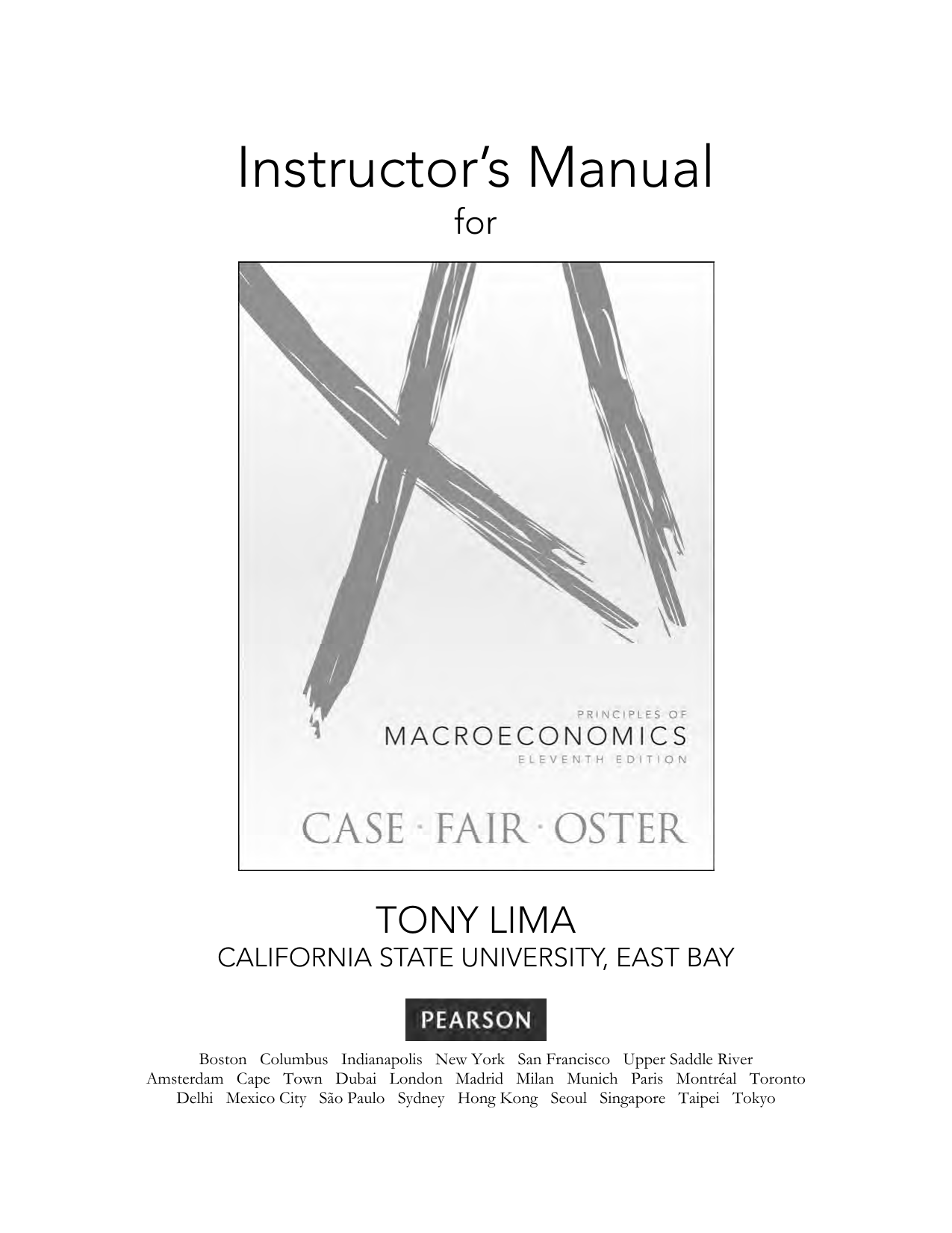
#MANKIW INSTRUCTOR MANUAL CHAPTER FULL#
in economics from MIT, he began teaching at Harvard in 1985 and was promoted to full professor in 1987. He began his study of economics at Princeton University, where he received an A.B. Beren Professor of Economics at Harvard University. Part V Topics in Macroeconomic Theory and PolicyĬhapter 16 A Dynamic Model of Economic FluctuationsĬhapter 17 Alternative Perspectives on Stabilization PolicyĬhapter 18 Government Debt and Budget DeficitsĬhapter 19 The Financial System: Opportunities and DangersĬhapter 20 The Microfoundations of Consumption and Investment Part IV Business Cycle Theory: The Economy in the Short RunĬhapter 11 Introduction to Economic FluctuationsĬhapter 12 Aggregate Demand I: Building the IS–LM ModelĬhapter 13 Aggregate Demand II: Applying the IS–LM ModelĬhapter 14 The Open Economy Revisited: The Mundell–Fleming Model and the Exchange-Rate RegimeĬhapter 15 Aggregate Supply and the Short-Run Tradeoff Between Inflation and Unemployment Part III Growth Theory: The Economy in the Very Long RunĬhapter 8 Capital Accumulation as a Source of GrowthĬhapter 9 Population Growth and Technological Progress Part II Classical Theory: The Economy in the Long RunĬhapter 3 National Income: Where It Comes From and Where It GoesĬhapter 4 The Monetary System: What It Is and How It WorksĬhapter 5 Inflation: Its Causes, Effects, and Social CostsĬhapter 7 Unemployment and the Labor Market Media and Resources from Worth Publishers Meghan Millea, Mississippi State University “My students experience the links between economic theory, model building, applications, and econometrics based on the way they learn economics through Mankiw's text.It is the solid foundation they get from their experience with Mankiw's Intermediate Macro book that enables them to continue applying and learning well after the final exam.” It provides new material and examples that are rigorous enough to meet the challenge yet approachable enough to foster the excitement.” It emphasizes real world examples and covers new and expanding economic development. “The text is engaging, well-written, up-to-date, and provides the most important recent developments in macroeconomics. I have looked at more advanced texts that use calculus, but have decided they are not as accessible for the student population that I teach.” “I've not seriously considered other texts since adopting Mankiw. As always, the data presented in the text is as current as possible. Highlights include more in income inequality in a new appendix to Chapter 3, a new case study on President Trump’s trade policies in Chapter 6, a new case study on unemployment insurance during the pandemic of 2020 in Chapter 7, materials on long-run economic growth has been rearranged and spread out from two chapters to three (Chapters 8, 9, and 10), bringing related topics closer together and offering students a more accessible introduction to the subject, a new case study on the misallocation of capital and labor in India and China.in chapter 10, and an extensive new section on the Covid-19 Recession of 2020 in Chapter 11. New and updated coverage throughout covers the Covid19 pandemic and much more. These unique assessments are available only with this text. Since 2017, a number of prominent economists have collaborated to produce EconoFact, described as “a non-partisan publication designed to bring key facts and incisive analysis to the national debate on economic and social policies.” Many chapters of the digital text conclude with links to brief EconoFact memos paired with assessments that ask students to test and apply what they have learned.

NEW EconoFact Memos with Unique Exercises.economy, which can be easily accessed using Federal Reserve Economic Data (FRED). Still other problems incorporate data: They ask students to answer questions about data describing the U.S.

Numerical problems present models with specific parameter values and ask students to calculate the resulting equilibria. Analytic problems ask students to practice shifting the curves in various models and interpreting the results. Professor Mankiw has written dozens of new end-of-chapter problems that are available only in the digital version of Macroeconomics. These graphs are also available as lecture slides. By breaking down the process into its components, these graphs create more manageable “chunks” for students to understand each step of the process.


 0 kommentar(er)
0 kommentar(er)
